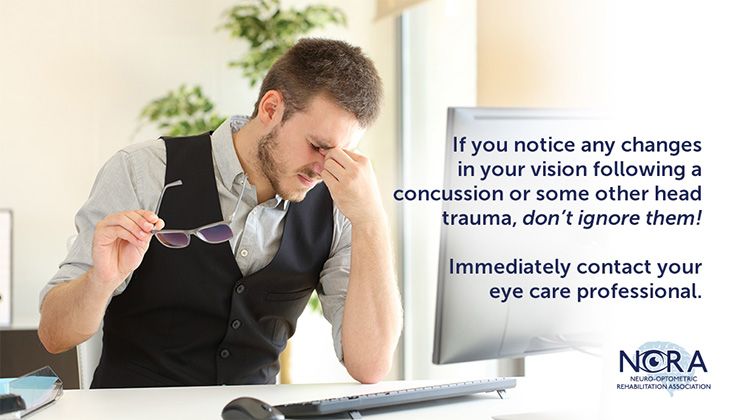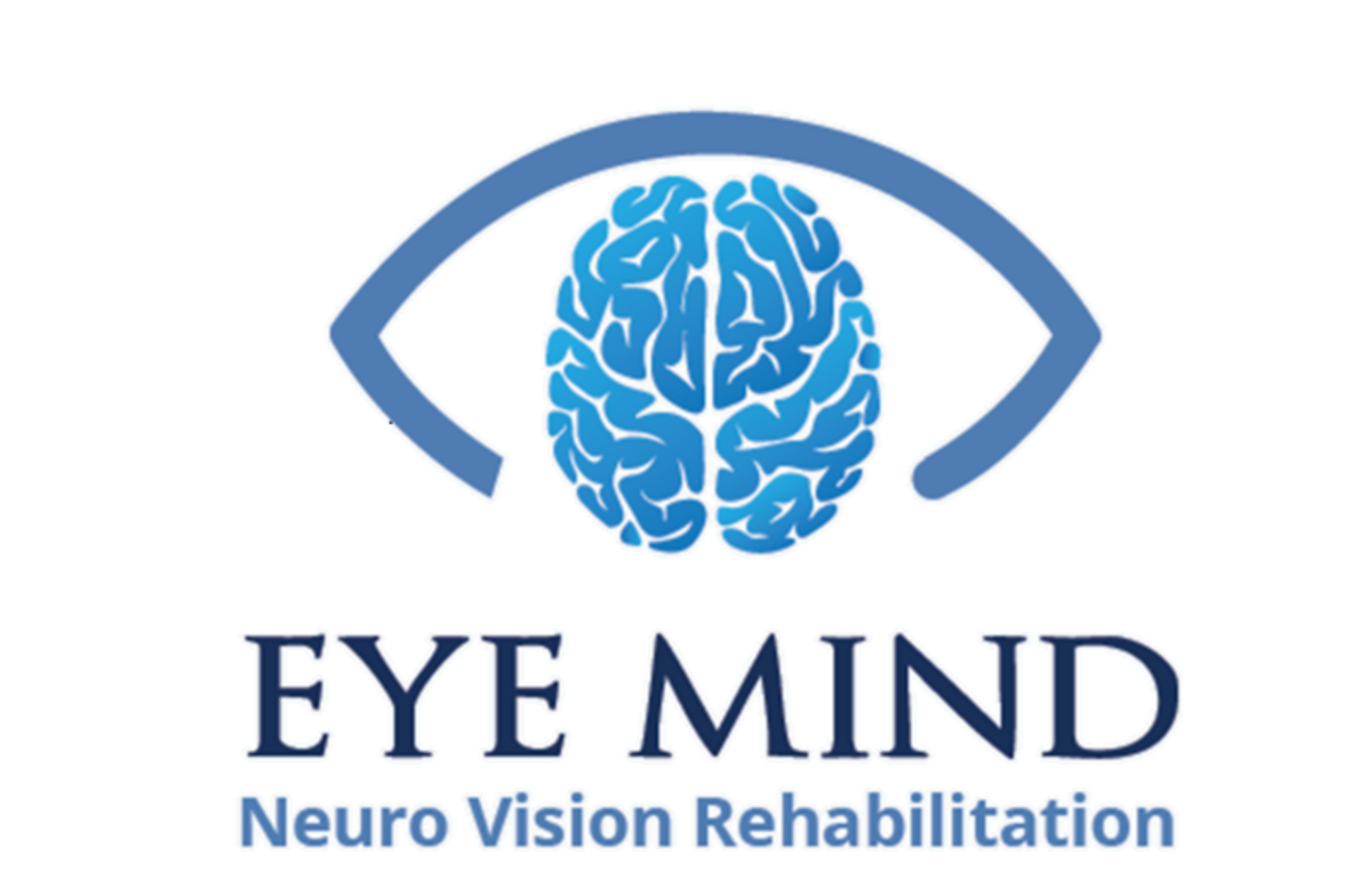During a comprehensive eye exam, your eye doctor will not only determine your prescription for eyeglasses or contact lenses but will also check your eyes for common eye diseases, assess how your eyes work together as a team, and evaluate your eyes as an indicator of your overall health.However, for individuals of all ages who may have visual deficits as a direct result of physical disabilities, traumatic brain injuries, and other neurological insults and/or diseases, a referral to a Neuro-Optometric Rehabilitation Optometrist who has special expertise in the assessment and treatment of visual disturbances associated with damage to the central nervous system, may be advised.
A Neuro-Optometric Rehabilitation Optometrist will examine not only the visual issues, but also other subtle factors involved in the complex visual process, such as posture, spatial awareness, visual memory, and motor output — all areas that can have wide-ranging effects on daily activities and on quality of life.
Accommodative Dysfunction
Our eyes have an automatic focusing system which adjusts the lens inside our eye in order to see clearly at all distances. When we look far away, up close, and back again, our eyes change focus rapidly to allow us to see things clearly at all distances. If there is a problem in how easily or quickly our eyes focus, that visual problem is called an accommodative dysfunction. Brain injury as a result of moderate head trauma may result in the development of myopia (nearsightedness) and significant accommodative dysfunction for individuals who previously had no history of myopia prior to the head trauma.
Accommodative dysfunction can cause blurred vision, difficulty with concentration and attention, visual discomfort, eye strain, headaches, reduced efficiency and productivity, fatigue, and other symptoms.
Binocular Vision Dysfunction / Strabismus
Binocular Vision is the ability to maintain visual focus on an object with both eyes, creating a single visual image. Binocular Vision Dysfunction is a condition in which the two eyes are unable to align properly. This puts heavy strain on the eye muscles as they are constantly trying to correct the alignment to achieve single focus vision.
Strabismus (often referred to as “crossed eyes”) is a binocular vision disorder in which both eyes do not look at the same place at the same time. It usually occurs in people who have poor eye muscle control or are very farsighted. Strabismus usually develops in infants and young children, most often by age three. Adults may have strabismus either from a residual childhood strabismus or they may acquire strabismus in adulthood. New strabismus that develops in an adult can result from conditions such as thyroid eye disease, stroke or tumors, but often there is no identifiable cause.
Convergence Insufficiency
Convergence insufficiency (CI) is a common binocular vision disorder. Recent studies have linked convergence insufficiency to correct identification of athletes with concussions. CI is often associated with a variety of symptoms, including eyestrain, headaches, blurred vision, double vision, sleepiness, difficulty concentrating, movement of print while reading, and loss of comprehension after short periods of reading or performing close activities. It is not unusual for a person with convergence insufficiency to cover or close one eye while reading to relieve the blurring or double vision. Symptoms will be worsened by illness, lack of sleep, anxiety, and/or prolonged close work.
Cranial Nerve Palsy Involving the eyes
Cranial nerves are nerves that lead directly from the brain to parts of our head, face, and trunk. There are 12 pairs of cranial nerves and some are involved with the eyes. A palsy is a lack of function of a nerve. A cranial nerve palsy may cause a complete or partial weakness or paralysis of the areas served by the affected nerve. A cranial nerve palsy can be congenital, traumatic, or due to blood vessel disease (hypertension, diabetes, strokes, aneurysms, etc.). It can also be due to infections, migraines, tumors, or elevated intracranial pressure. Some of the symptoms of cranial nerve palsy include limited eye movements, double vision, droopy eyelids or an abnormally dilated pupil.
Nystagmus
Nystagmus is a vision condition in which the eyes make repetitive, uncontrolled movements. These movements often result in reduced vision and depth perception and can affect balance and coordination. These involuntary eye movements can occur from side to side, up and down, or in a circular pattern.
Ocular Motor Dysfunction
Ocular Motor Dysfunction (OMD) is a condition that can be present in childhood or as an adult. OMD occurs when the eyes can’t track or move smoothly between objects. The eyes may make multiple stops as they track from object A to B; they may overshoot or undershoot the target.
This condition often causes reading problems because survivors can’t keep their place. They may skip over lines or may not be able to find where to go at the end of the line. It may affect walking because they can’t scan the environment accurately, and thus they misjudge things. As a result, an individual may have difficulty with depth perception, visual attention, visual memory, visual perceptual tasks, visual scanning, spatial disorientation, eye-hand coordination, balance, or reading and writing tasks.
Post Traumatic Vision Syndrome
Following a neurological event such as a traumatic brain injury, cerebrovascular accident, multiple sclerosis, cerebral palsy, etc., individuals frequently will report visual problems such as, but not limited to, seeing objects appearing to move that are known to be stationary; seeing words and print run together, double vision, and experiencing intermittent blurring. In some cases; symptoms may not appear for days, weeks, or even longer following the event. Some symptoms may only last a few seconds while others can linger much longer – months and even years. These patients may be told that their problems are ‘not in their eyes’ and that their eyes appear to be healthy when they may be suffering from a syndrome affecting the visual process in the brain called Post Trauma Vision Syndrome (PTVS). Persons who are not treated for PTVS can experience this syndrome for many years following a neurological event.
Spatial Disorientation
Spatial disorientation, or spatial unawareness, is the inability of a person to correctly determine his/her body position in space. You need to see correctly to function correctly because the eyes guide the hands and body. Many brain injury patients feel spatially disoriented because they are either missing part of their visual field, or because their depth perception is altered.
Two examples are:
Visual Midline Shift Syndrome
Following a CVA individuals tend to lean toward one side of the body because they think that their body center is shifted. The brain will attempt to compensate for this weight shift by shifting the visual midline away from the affected side. This can cause the person to shift their body laterally which, in turn, affect balance, posture and gait. This event is generally termed Visual Midline Shift Syndrome.
Visual Neglect
Individuals who have had a stroke or traumatic brain injury, may lose one half of their side vision to the right or left. This type of side vision loss is called “Hemianopsia.” Those who just have a hemianopsia are aware of the side vision loss and often can be easily taught to scan their eyes in the direction of the hemianopsia, in order to compensate for the field loss. This allows them to not miss things on the side of the hemianopsia.
“Neglect” is the inattention to, or lack of awareness of visual space to the right or left and is most often associated with a hemianopsia. With this condition the survivor may not pay attention to objects on the affected side – for example, food on the left side of a plate is untouched, or the left side of the face is unshaven. In some cases, the person doesn’t even realize he or she has a left side. The brain is not processing information from the left side of the body very efficiently.
TIPS FOR MANAGING VISION PROBLEMS ASSOCIATED WITH BRAIN INJURY
It is always best to consult with your eye care professional on managing any vision problems you may be experiencing. Following a concussion or other brain trauma, a Neuro-Optometric Rehabilitation Optometrist, trained to evaluate and treat vision problems after a brain injury, can offer specific advice tailored for your particular situation. A treatment plan can include specialized glasses with prism or color tints, and/or a comprehensive Neuro Optometric Rehabilitation Therapy Program.
Here are some helpful tips for things you can do at home and/or at work, depending on your situation.
Take breaks

This is especially important when reading, watching television, or using a computer or other electronic devices. Set an alarm to give your eyes a break every 20 minutes.
Reduce Glare
Use natural light whenever possible. If your eyes are sensitive to lights, try to avoid bothersome light sources like fluorescent tubes; the “flicker-effect” can be an irritant for some people. Use of a neutral non-glare filter on your computer screen can be helpful. Wearing tinted lenses, indoors or out, may also help cut down on glare. Your neuro-optometric rehabilitation optometrist can help find the best color and type of filter tint for you.
Think Big
Magnifying devices make objects bigger so they are easier to see. Electronic readers [tablets] can be used to increase print size and contrast.
Keep your eyes moist
Dry eye is a condition in which a person doesn’t have enough quality tears to lubricate and nourish the eye. When we blink, we squeeze the different glands in our eyes to produce the tear film. This only happens properly, however, if we perform a full blink. After a brain injury, the rate of blinking may slow and the completeness of the blinks may decline, leaving eyes to become dry and uncomfortable. Today, there are a number of over-the-counter and prescription eye drops available to relieve many types of eye discomfort, such as dry eyes and red eyes. Choosing a drop that is not designed for your condition may not alleviate your discomfort, may make your symptoms worse, or even create a different eye problem. That is why it is important to seek the advice of your Eye Care Professional before using any kind of eye drop so he/she can evaluate your symptoms and the severity of your condition before recommending the appropriate treatment for your condition.
Reduce visual overload
Try to cut down on clutter and keep all the items needed to complete a task together in one place. Designate one storage place for a frequently used item, like your car keys. Not having to search in multiple places for what you need will reduce the amount of input to the visual system. This can help keep you from being overwhelmed by visual information.
